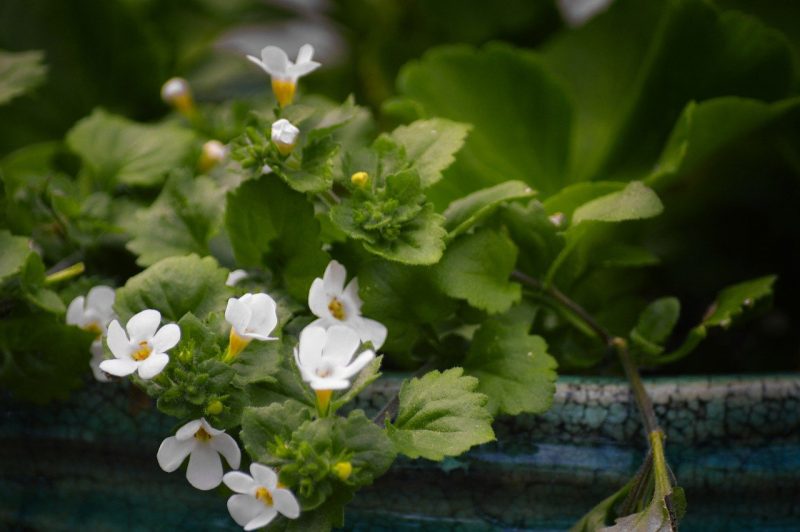There are three considerations to master how to care for bacopa. However, the emphasis is necessary on knowing the specific type of bacopa that you are growing to adjust the conditions and maintenance practices appropriate for the species. Nonetheless, growing and caring for bacopa is generally easy to do that one can consider this plant as beginner-friendly.
Those who have a greenhouse can also use its benefits to their advantage in caring for bacopa. Remember that when caring for any plant, the stable environment that a greenhouse offers will always be advantageous in preserving its health. The gardener will only have to note the requirements of the plant to ensure success.

How To Care For Bacopa For Beginners
Location
The first factor in ensuring the happiness of your bacopa plants is providing them the ideal growing location. You can grow bacopa in the greenhouse for starters because it will be more comfortable to maintain them under stable conditions. Regardless, an area with partial sun or shade would be the best for bacopa.
Bacopa should thrive well in receiving morning sun, but you don’t want prolonged exposure to the harsh sun. Partial shade would be best, but if you’re growing in the greenhouse, be sure to provide some lights. Those who grow in their homes can also keep bacopa in a window box, but be mindful that bacopa tends to spread quickly, especially in containers.
Speaking of spreading, anticipate the growth of your bacopa plants. You want to ensure that you are providing enough space for their development, and you can prepare for this by knowing the habits of the bacopa variety you have. In general, they can spread up to two feet in just one season, but some can reach four feet, so you may need to trim those in containers over time.
Water and fertilizer
Much like when watering and feeding any plant, you also want to learn the bacopa plant’s specific needs that you’re growing. However, one can simplify these practices based on the general ideal state of a bacopa plant. For example, if the location and climate are hotter and drier than usual, you can assume that you need to water the plants more.
Remember that bacopa thrives in moist and well-draining soil, so ensuring that they are well-hydrated is necessary for care. More so, keeping the plants hydrated will ensure healthy and consistent blooms. Not receiving enough water can cause wilting and even halt flowering, but overwatering also puts you at risk for rot.
Always be mindful of watering your bacopa plants and check the top inch of the surface before doing so. When it comes to feeding, you can fertilize once a month and throughout the season as part of care. This will help in flower production and keep the soil rich for the plants’ health.
Pest management
Another factor that you have to keep in mind is how you’ll manage pests on your bacopa plants. For example, the most common insects to encounter in bacopa are aphids. Prevention will always be better than treatment, so make sure to practice proper sanitation and allocate a quarantine area for new plants.
Once you see aphids, you can use neem oil to treat bacopa plants. However, the emphasis is necessary on following the labels on insecticides to prevent damaging the plants. In some cases, you can even address low aphid populations with a simple water spray.
Besides pest, general maintenance of the environment and diligence in feeding and watering should prevent problems like rot and fungal diseases. Always check the temperature, humidity, air circulation, and spacing among your plants. Overall, bacopa plants don’t have an extensive list of serious diseases as long as you care for them consistently.
How To Propagate Bacopa
Over time, you can also take cuttings from your plant to produce new bacopa. You can take cuttings from trailing annual bacopas in late summer and plant them in pots with a mix of sand and peat moss. Ensure soil moisture and cover the containers with plastic to help with establishment.
You can place the pots somewhere bright but out of direct sunlight. The greenhouse would also be excellent for starting bacopa cuttings to protect them from harsh temperatures. You can expect root growth within four weeks and then replant the young plants outdoors in spring once the danger of frost has passed.
Conclusion
One of the best container plants to grow is bacopa, and you can also choose from varieties that will suit your space. Learning how to care for bacopa is even stress-free as long as you keep three factors in mind. For example, check the location if it is optimal for the growing conditions of the variety you’re growing.
Your management practices, like feeding and watering, also play a significant role in your bacopa’s overall health and bloom production. Keep the soil moist and feed your bacopa plants well. Lastly, the only potential problem common in growing bacopa is aphids.
You can always prevent their infestation by being mindful of your daily practices. More so, you might benefit from growing bacopa in the greenhouse to ensure that their environment is stable. This will make it less likely for diseases to happen, common in fluctuating environmental conditions.
